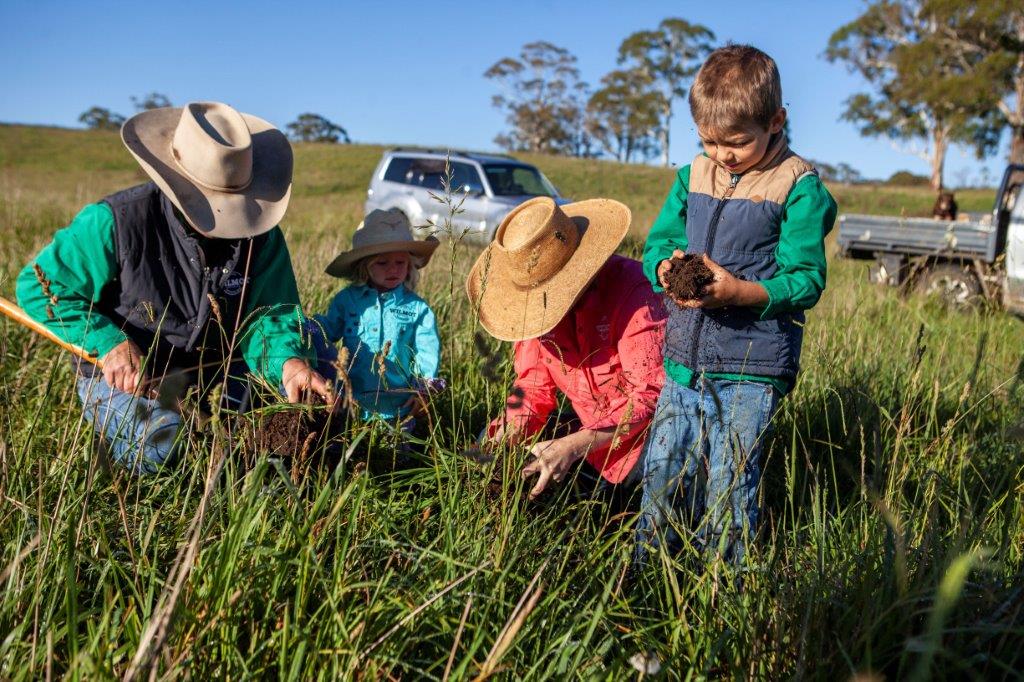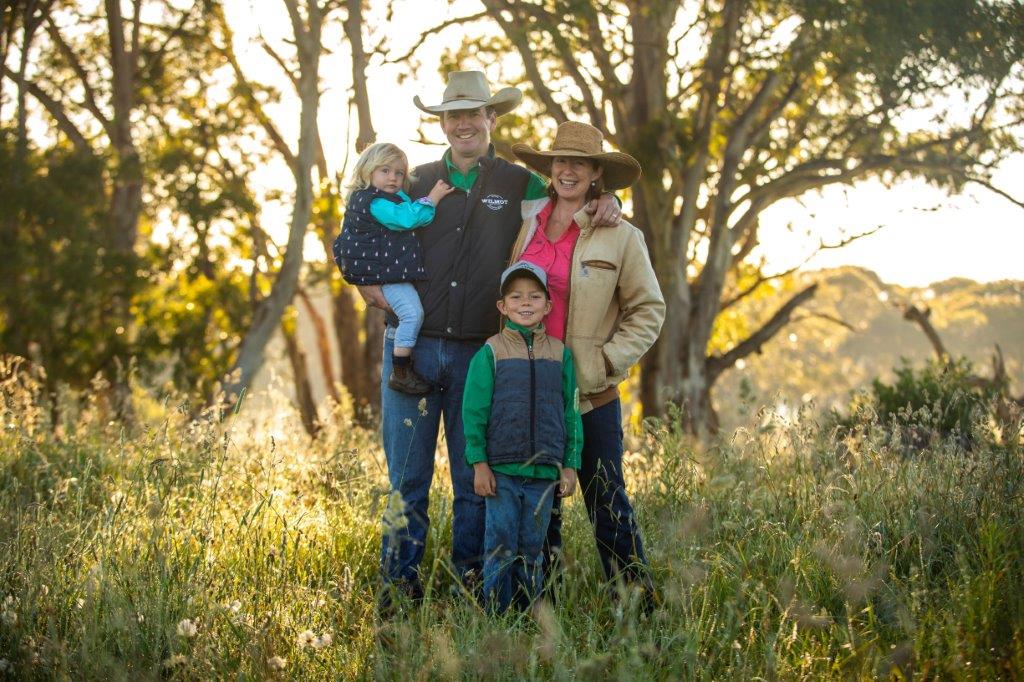AB Direct - Steers
Rail: 492.00-498.50 FOB feedlot (last week)
AB Direct - Heifers
Rail: 492.00-498.50 FOB feedlot (last week)
US Trade- Steers
Rail: 380.00 NE, IA (last week)
US Trade - Heifers
Rail: 380.00 NE, IA (last week)
Canadian Dollar
0.04

Australian cattle ranch sells $500,000 in carbon credits to Microsoft
Improved grazing management strategies and soil testing consistency can pay big dividends to producers — and support the environment.
By Laura Laing and Robin Galey
Collecting consistent field data can have a truly high value, one Australian ranch finds. Wilmot Cattle Company in New South Wales recently signed off on a significant sale of carbon credits—valued at $500,000— to tech giant Microsoft.
The ground-breaking sale was the product of enhanced grazing management strategies and consistent soil data collection, which resulted in documented soil carbon gains over the past three years.
Wilmot is the first cattle operation to sell carbon offsets in a private unregulated market transaction.
Wilmot’s carbon credits were verified and sold through U.S.-based start-up company Regen Network by Microsoft as part of the company’s carbon offset initiative. Wilmot is the first business in Regen Network’s portfolio to sell credits, branded “CarbonPlus Grassland Credits,” based on soil organic carbon sequestration achieved through rotational grazing.
Stuart Austin, general manager of Wilmot Cattle Company, says improvements in their grazing management strategy helped increase efficient use of pasture, build drought-resilience and significantly lift soil carbon levels. “We saw an increase from 2.5% to 4.5% in sequestered carbon demonstrated through soil sampling data. The scale of the transaction was enough to get people talking: 40,000 tonnes of carbon net of emissions—that’s what they paid us for,” he says.
Wilmot’s goal is to reach 6% soil carbon levels measured down to a metre deep by 2023. Grazing management strategies that are supporting increased carbon sequestration include time-controlled rotational grazing, additional fencing and permanent water systems, and reduced paddock size.
Combined, the strategies have resulted in improved soil and plant health, increased ground cover biodiversity and biomass, better water retention, reduced need for chemical fertilizer, and the elimination of soil erosion.

Wilmot now also uses remote sensing to further increase the consistency and regularity with which soil test data can be collected. The ranch’s soil sampling strategy is a key message Austin shares with other producers: “Consistent samples — taken at the same time in the same areas over a number of years — have been pretty critical to this project for us,” he says.
Alasdair MacLeod, chairman of the Macdoch Group, which owns Wilmot Cattle Company, said he believes this is a step forward for the livestock industry. “Instead of being part of the environmental problem, we believe that well managed livestock can be part of the solution to the challenge of carbon emissions.”
Wilmot Cattle Company operates three farms in northern New South Wales, which are managed separately but operate cooperatively, with a complementary mix of breeding, trading and 100% grass finishing of their herd.
Wilmot is the first cattle operation to sell carbon offsets in a private unregulated market transaction. The sale came about after Austin went to a conference in the U.S., where he met with Regen Network, a business talking about monetizing carbon. Regen Network validated the carbon credits and sold them to Microsoft.
“We sent them our data, and the real strength of our data was that it was from the same sites at the same time of year every year, so it was really consistent,” says Austin.
Wilmot Cattle Company is also working with the Australian government and Clean Energy Regulator to help develop a regulated market for soil carbon credits in Australia. The program is good and important, he says. But participating is onerous.
“We are not a carbon farm, and we don’t claim to be — we’re a beef production business, but carbon is a benefit.”
“The cost, rigour, and administrative burden are a challenge. It’s a great program, and there are huge opportunities for landholders,” Austin explains. “But we’re in constant conversation with the government around simpler, cheaper, easier, more efficient implementation of those projects in hopes that more people will participate.”
To understand the scale of Wilmot’s commitment, Austin points out that they recently took 150 samples down to a metre deep across all three of their farm sites, at a cost of about $160,000. Collecting that data now will pay dividends down the road. “Now that we have this data, we’ll collect it again over five years and go back to Microsoft. Next time we’ll have one metre of carbon to sell, not just 15 centimetres, which is what we sold them so far,” he says.
Austin says Wilmot supports the government program over pursuing private sales in a non-regulated market, but doing so certainly gained some attention: “One reason we wanted to do it was to start the conversation. It’s a significant amount of money. All of a sudden, people are asking: “Hey, how do I do that?””

The larger goal is to help kick-start government and industry support for farms implementing sustainable practices, and show consumers that raising cattle can have a net positive environmental impact. On Wilmot farms, the cattle emit about 2,000 tonnes of methane annually, but the land management strategy is resulting in the sequestering of nearly 10,000 tonnes. Austin adds: “I have no doubt that many other producers are in the same position as us this way, they just don’t have the data to prove it.”
It’s all part of a signal to the rest of the world to say, “Let’s get on with this!” Austin says, “Our passion around soil carbon is that, rather than reducing emissions, or doing something in one area to offset emissions somewhere else, this is actually taking carbon out of the atmosphere and putting it in the ground.”
His advice to Alberta beef producers is to combine consistent soil testing with grazing management improvements. “The thing that’s made the difference is grazing management; higher density holistic management, rotational grazing and regular and consistent soil testing. Start getting some samples and take them in the same place where you took them three or five years ago so you can compare them to see what you’ve achieved.”
He adds that the most valuable tool Wilmot has used in the process is the grazing management software Maia Technology. “It’s helped us become very proficient grass managers, and that’s what we had to do fundamentally to make this work,” says Austin.
Finally, Austin points out that he hopes Wilmot’s story will encourage other producers to work toward documenting sustainable land management practices. “I hope we inspire other producers to consider this. Carbon has been a co-benefit of our beef production business. We are not a carbon farm, and we don’t claim to be—we’re a beef production business, but carbon is a benefit.”
Laura Laing is a public relations and marketing and communications specialist and consultant, who specializes in agriculture. In addition to her full-time role as Owner and President of L.L. Communications, Laura is also a cattle producer.
Robin Galey fell into an agricultural communications career after falling off a horse in the Alberta foothills over 25 years ago. She has been cheerfully writing and editing agricultural communications from her home office in Calgary ever since. She seldom rides horses.
This article was published in the May 2021 edition of ABP Magazine. Stay tuned to ABP Daily to see more content from the magazine, and update your contact information to receive the next issue.
